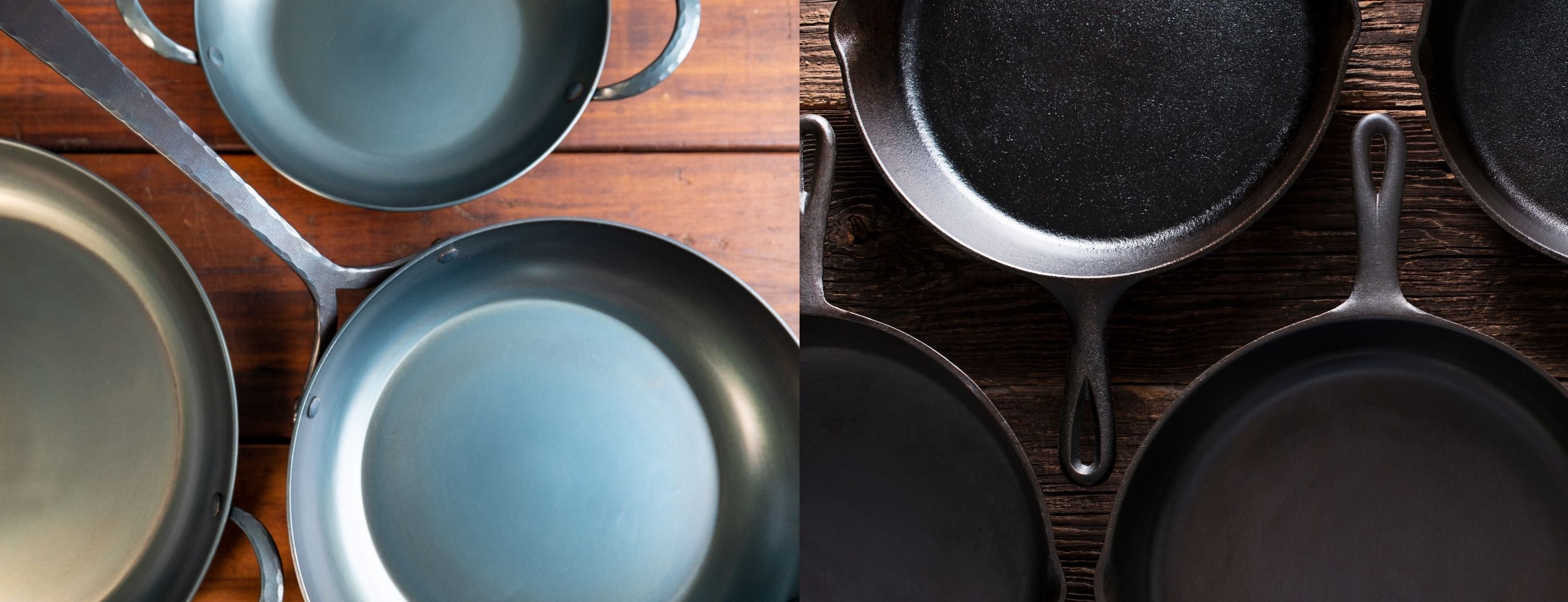

We have a lot of love for our cast iron cousins in the cookware material realm. In fact, you could say they are our inspiration in many respects. Cast iron has a long history and relationship with cooking and is one of the most durable cookware materials available today. While there are many fanatics qualities of cast iron that make these pans great for cooking, there are qualities of carbon steel to consider when choosing between the two.
Carbon steel is lighter than cast iron and can be formed with curved walls.
Carbon steel provides a lot of the same cooking advantages as cast iron without certain design limitations. Because mild or low carbon steel contains less carbon in its iron to carbon ratio, carbon steel is more malleable than cast iron. This means that it can take on a thinner sidewall, a longer handle, and a more ergonomic design than cast iron.
How does this help? Well, it means that your pan will cook with all of the same properties of cast iron, but it will be lighter and more comfortable to maneuver.
Carbon steel won’t crack if dropped, unlike cast iron, which is susceptible to forming fractures with enough force imposed upon it. This is due to the fact that cast iron actually has a higher carbon content than carbon steel making it more brittle which is one of the reasons it tends to be thicker than carbon steel.
Carbon steel's malleability allows for features such as our long, split handles. This allows for the benefit of reducing the amount of heat transferring to your hands, keeping your hands cooler throughout the cooking process.
Cast iron retains its heat longer, which in some cooking scenarios can be beneficial, but may also lead to overcooking or burning.
Carbon steel’s lower carbon content allows for it to have a smoother cooking surface making it easier to cook with than the more textured surface of cast iron.
Overall, both materials are excellent cooking surfaces that are more durable and less toxic than alternatives however, carbon steel has the added benefit of design advantages and is arguably easier to cook with than cast iron.